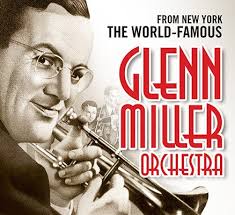 In Joel Whitburn’s A Century of Pop Music, an interesting note. “The recording industry enjoyed booming success during the early 1940s until the era’s dominant big bands were stilled on August 1, 1942, when the American Federation of Musicians joined in a ban on recording due to a dispute over musicians’ royalties.
In Joel Whitburn’s A Century of Pop Music, an interesting note. “The recording industry enjoyed booming success during the early 1940s until the era’s dominant big bands were stilled on August 1, 1942, when the American Federation of Musicians joined in a ban on recording due to a dispute over musicians’ royalties.
“By the time all the record companies entered into an agreement to end the ban in late 1944, vocalists had assumed predominance over bands in popularity.”
This is also the year of one of my favorite movies, Casablanca. I’ve mentioned it at least a dozen times in this blog. I saw this film, outdoors in a park, maybe in Rochester (?) with my friend Debi. I’ve lost track of the friend ever since. Nor have I seen the film again, and it was at least thirty years ago, so I should fix that. It’s certainly one of the oldest films that I’ve ever viewed, aside from The Wizard Of Oz and a handful of others.
White Christmas – Bing Crosby (Decca), 11 weeks at #1, gold record. In 2016, I wrote a whole post about the song here. I noted that the recording ALSO led the rhythm and blues tally for three weeks that year, and continued to appear on some charts for several years. It is the best-selling single worldwide with an estimated 50 million copies sold.
Bronze Star
Moonlight Cocktail– Glenn Miller with Ray Eberle and the Modernaires (Bluebird), 10 weeks at #1, gold record. From Wikipedia: “In 1942, Miller volunteered to join the U.S. military to entertain troops during World War II, ending up with the U.S. Army Air Forces. On December 15, 1944, while flying to Paris, Miller’s aircraft disappeared in bad weather over the English Channel. He was posthumously awarded the Bronze Star Medal.”
Jingle Jangle Jingle– Kay Kyser with Henry Babbitt and Julie Conway (Columbia), 8 weeks at #1, gold record.
(I’ve Got A Gal In) Kalamazoo – Glenn Miller with Tex Bereke, Marion Hutton, and the Modernaires (Victor), 7 weeks at #1, gold record. Apparently, Kalamazoo was a funny-sounding city name, like Walla Walla and Schenectady.
Tangerine – Jimmy Dorsey with Bob Eberle and Helen O’Connell (Decca), 6 weeks at #1. A familiar tune, though I don’t remember specifically why.
Sleepy Lagoon – Harry James (Columbia), 4 weeks at #1. Instrumental.
A String Of Pearls – Glenn Miller (Bluebird), 2 weeks at #1. Instrumental. All of the Miller cuts are well known to me.
Blues In The Night (My Mama Done Tol’ Me) – Woody Herman (Decca)

 By 1931, in the midst of the Depression, the music business plummeted. According to A Century of Pop Music by Joel Whitburn, record sales hit only six million in 1932 compared “to the peak of 140 million only five years earlier. The opportunity to hear all the popular songs on the radio for free… also contributed to the desperate slump.”
By 1931, in the midst of the Depression, the music business plummeted. According to A Century of Pop Music by Joel Whitburn, record sales hit only six million in 1932 compared “to the peak of 140 million only five years earlier. The opportunity to hear all the popular songs on the radio for free… also contributed to the desperate slump.” Here’s a space oddity: David Bowie was only 69 years and two days old when he left us on January 10, 2016. That is not old at all, especially if you are a sexagenarian.
Here’s a space oddity: David Bowie was only 69 years and two days old when he left us on January 10, 2016. That is not old at all, especially if you are a sexagenarian.
